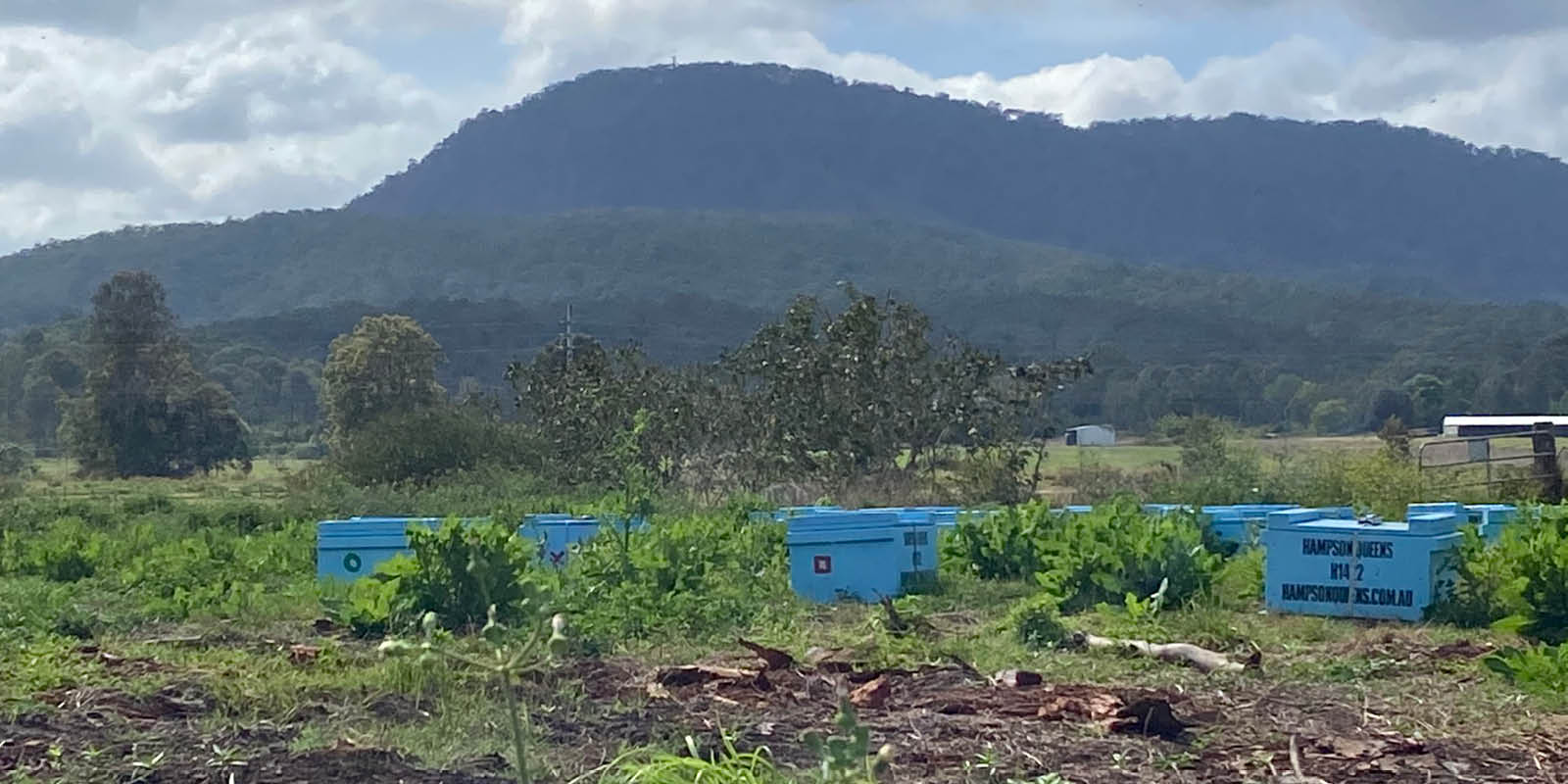This spring we’ve been privileged to see firsthand how bees and broad acre farming can not only co-exist but thrive.
One turf farm in south-east Queensland offered up a prime location on the riverbank where both native and non-native species grow prolifically, providing a palate where nectar, pollen and water were all in abundance for hungry honey bees.
Honey bee nutrition is maybe not something we, by inexperience, think about but it is principally concerned with the quality and quantity of nectar and pollen collected and stored. Therefore, for Beekeeper Jonno Hampson from Hampson Queens the location was ideal, and he and his bees leapt at the opportunity.
Honey bees need a lot of fuel in early spring for comb construction and population build-up.

Paying attention to honey bee nutrition is just one of the more important aspects of successful beekeeping. Ensuring that hives are populated by young productive queen bees is equally as important as paying attention to the management of honey bee nutritional requirements.
Beekeeper Jonno reports that the local conditions offered up plenty of feed for the breeding queen bees to nicely “beef-up on” for the season.
Most importantly the turf farm’s management practices were in line with being a safe and friendly environment for the bees and the surrounding flora and fauna, without compromising turf production, quality or growth – a win win for bees and importantly the role they play in the life cycle!

